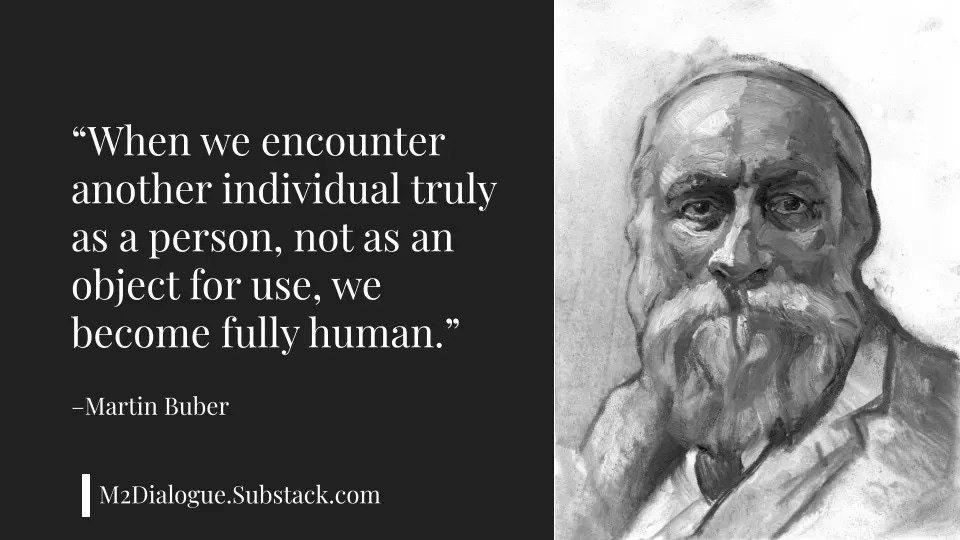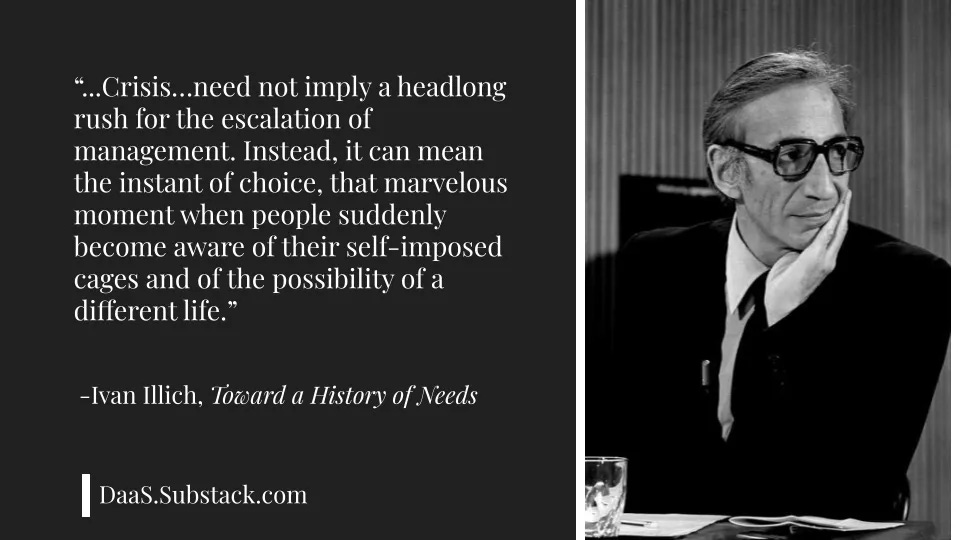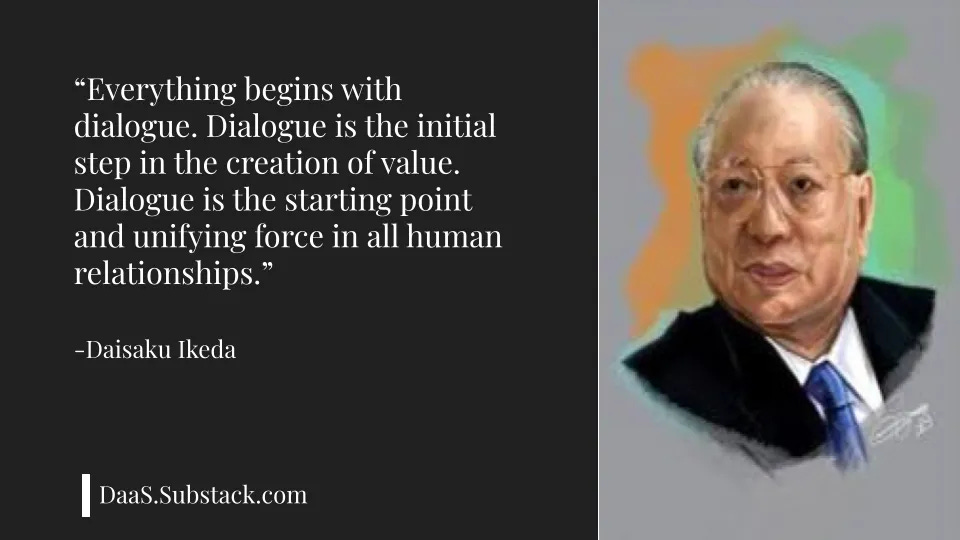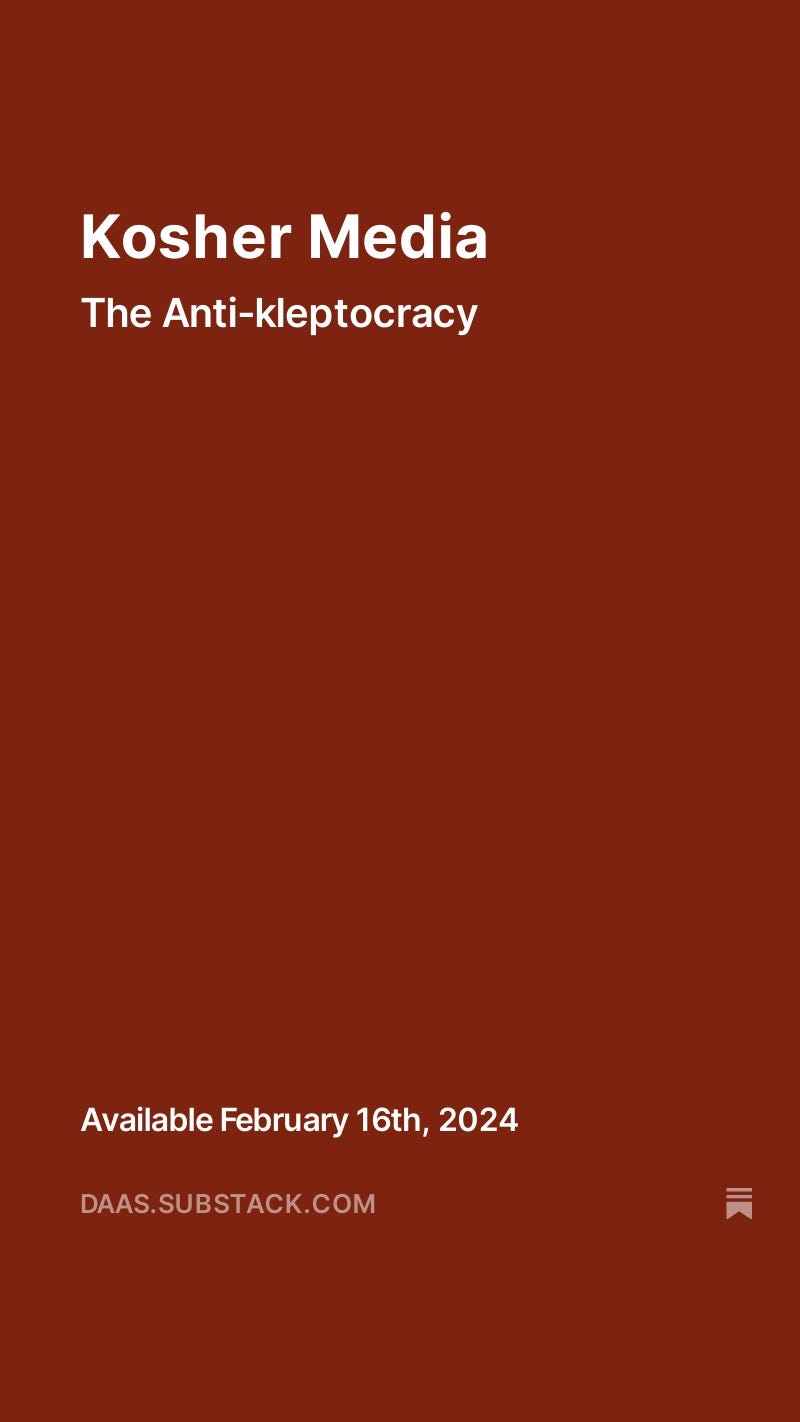As a man with something to sell — i.e., subscriptions — I wrestle with the idea of defining my product. The main challenge is that there’s no way to define what I call Dialogue as a Service (DaaS). Definition is distortion.
Still, I don't mind responding to likely questions from readers considering DaaS subscriptions. Even readers not yet ready to make a financial commitment should subscribe for free and help build a community of partners in dialogue.
Frequently Unasked Questions (FUQs): What Is Dialogue as a Service (DaaS)?
What's DaaS? Since my return to Substack, I’ve answered this question in at least three ways. Developing these answers helped me sketch out a new cartography of the potential and pitfalls of dialogue as a subscription-based service.
1. It’s a way of becoming fully human.
Dialogue is a way of becoming fully human by honoring the humanity of another individual. I propose a definition of dialogue as Human-to-Human Communications (H2HC) shielded from corrupting influences. The list of possible corruptions doesn't conform to neat categories but it certainly includes:
Transactionalism
Objectification
Manipulation
Undisclosed conflicts of interest
Desire to be right
Tendency to debate from fixed positions
Fear of the other
False dichotomies
Implicit imbalances of power
Inability to acknowledge the wholeness of the participants in dialogue.
Misuse of Artificial Intelligence (AI).
Unseen participants in dialogue, including other people or organizations and what object-relations theorists call “introjects”.
2. It’s a way of nurturing the possibility of a different life.
We confront a “World-wide Choice” forced upon us not only by the standardization of human responses to everyday occurrences, but also by the displacement of all our gods and languages by the “megamachine”. The megamachine ceaselessly fuels our expectations while draining our competence and concern for others.
We choose this self-destructive path, but not because we wish to be destroyed. We choose slavery because our culture celebrates it as salvation. On this path, we inevitably fight savage battles for our share of the “drugs” to feed our habits (whether the habit is addiction or envy). So, we usually choose the “obvious marked exit”, and we find ourselves trapped in the megamachine. That's the predictable consequence of following the self-destructive scripts of our culture.
In our crisis-laden world, the alternative seems unthinkable, but we must stay open to the possibility that we can muster “…the courage that alone saves in a panic: the courage to stand still and look around for another way out.”
3. It’s the beginning of everything.
Against the backdrop economic nihilism, dialogue is the initial step in the creation of value. Where this step leads depends on the quality of attention the participants bring to the interaction.
No source I know provides the definitive map of the space for conscious dialogue or a taxonomy of its corruptions. For centuries, numerous ideologically inflated factions — including, philosophical, religious, secular, therapeutic, scientific, etc. — have claimed to provide reliable maps of this territory. Some have even claimed cartographic supremacy.
With all due epistemic humility, I compare existing maps to the content of an average email spam folder. Even without formal proof of fraudulent intent, we apply the presumption of guilt to the latest email bearing a misspelled promise of salvation. Any cartographic tradition without self-corrective mechanisms falls into the trap of confirmation bias and becomes part of the problem.
Most existing maps of the space for conscious dialogue will prove as reliable as the maps of the world drawn before the Copernican Revolution.
Frequently Unasked Questions (FUQs)
This is the beginning of a series of posts in which I “define my product” and not just by mixing metaphors. In addition to these previously published answers to the most frequently unasked question, I’ll share these updated product details without refilling the metaphor cocktail.
1. What is Dialogue as a Service (DaaS)?
Through DaaS service packages, I offer subscribers research-based responses to problem statements focusing on any area of life or work.
2. What are the “Tiers of Service”?
Tier 1 subscriptions to DaaS ($100 per month or $1,000 per year) include access to all published content, an hourlong DaaS session, and two 90-minute DaaS sessions with research-based responses to the subscriber's problem statement.
Tier 2 subscriptions to DaaS ($2,000 per year) include access to all published content, an hourlong DaaS session, two 90-minute DaaS sessions and four newsletters providing a research-based response to the subscriber's problem statement.
Other subscription options are available.
Stay tuned for special offers.
3. What qualifies me to provide Dialogue as a Service?
My relevant qualifications begin with four core skills:
Reading
Writing
Speaking
Listening
I've honed these skills over lifetimes of experience, including twenty years of corporate consulting and eight years of post-corporate experience.
4. If affordability is an issue…
I don't want it to be an issue. DaaS isn’t for everyone, but I hope that no one turns away from DaaS because of money. If you feel that DaaS is right for you but unaffordable, please email me at lev.janashvili@gmail.com and write “affordability” in the subject line. I’ll respond with a special offer within a week.
5. What's next?
Tune in next week for the latest on my response to the state of dialogue.








